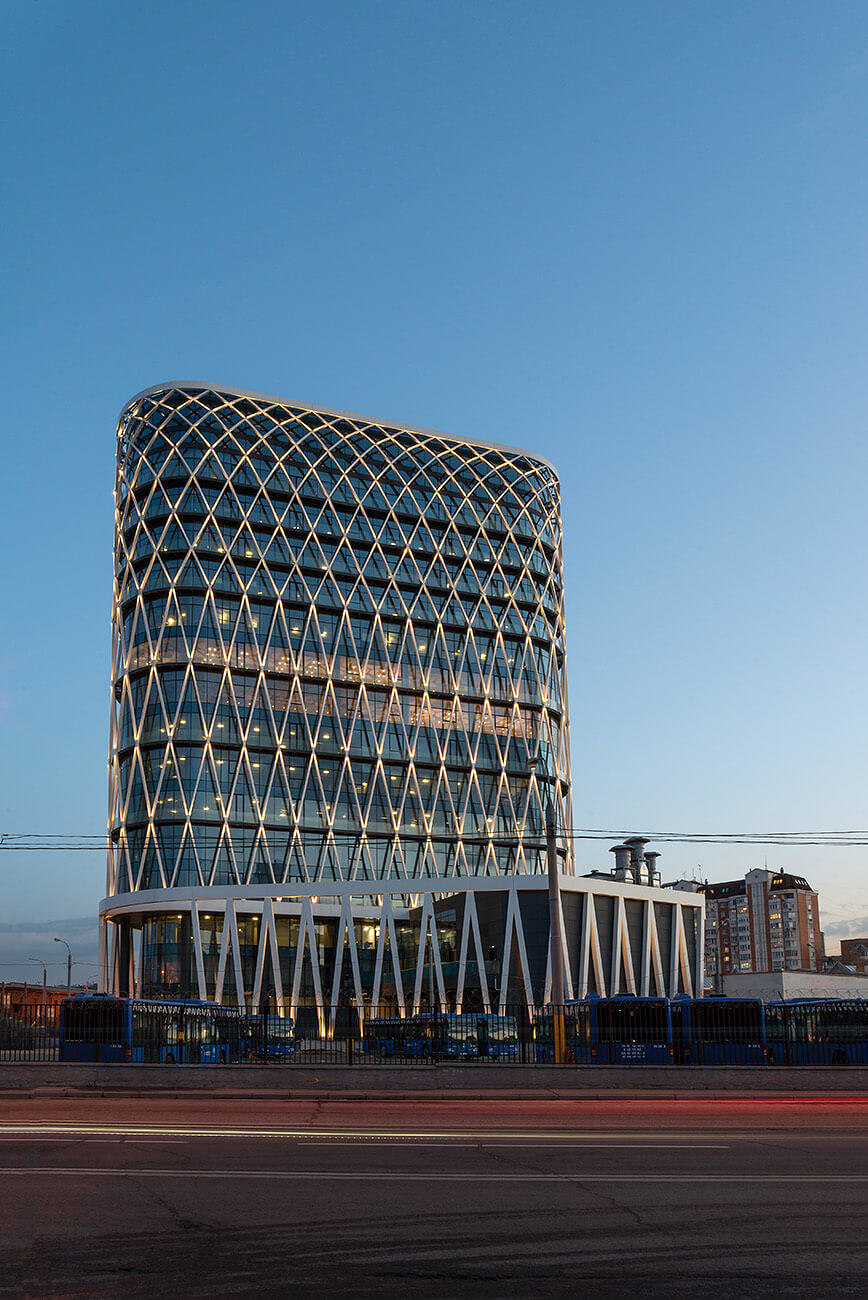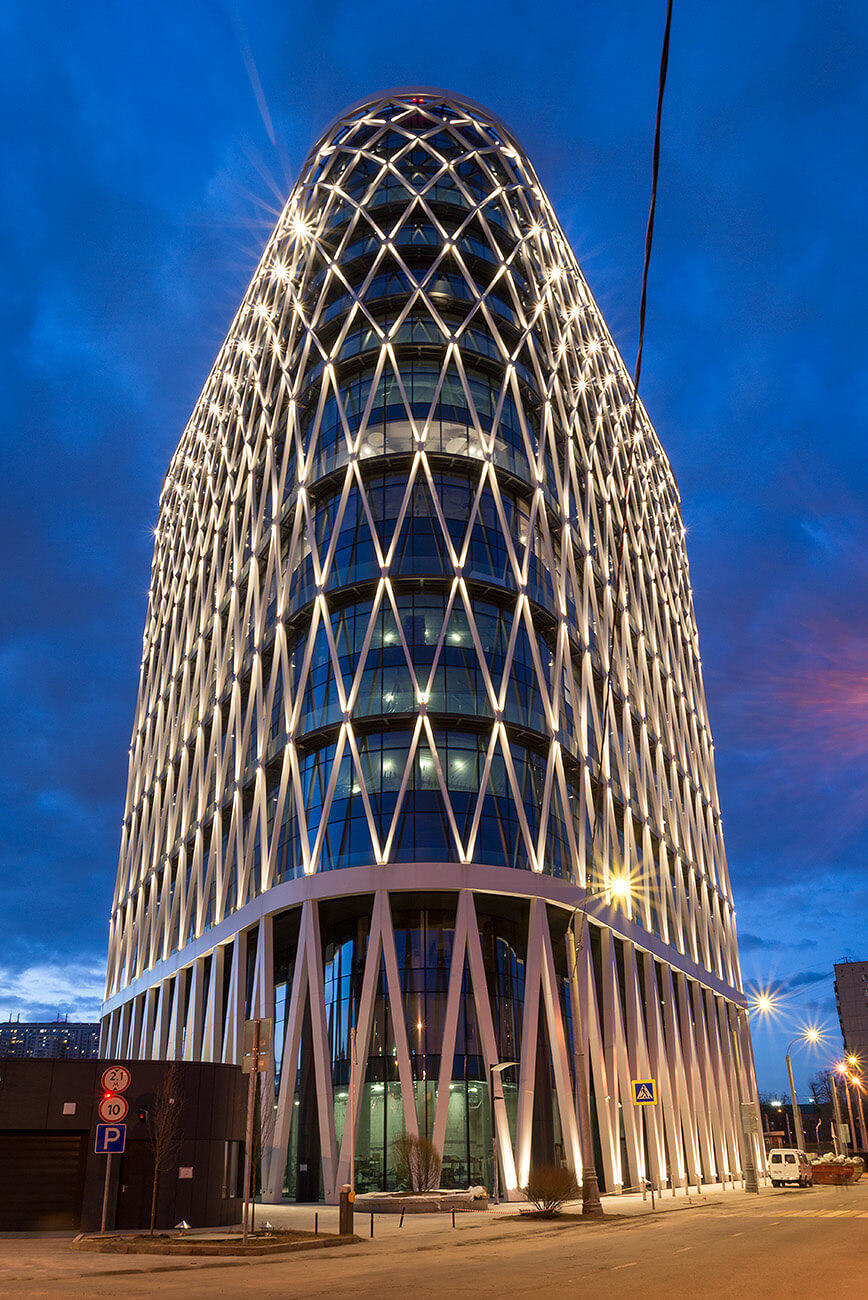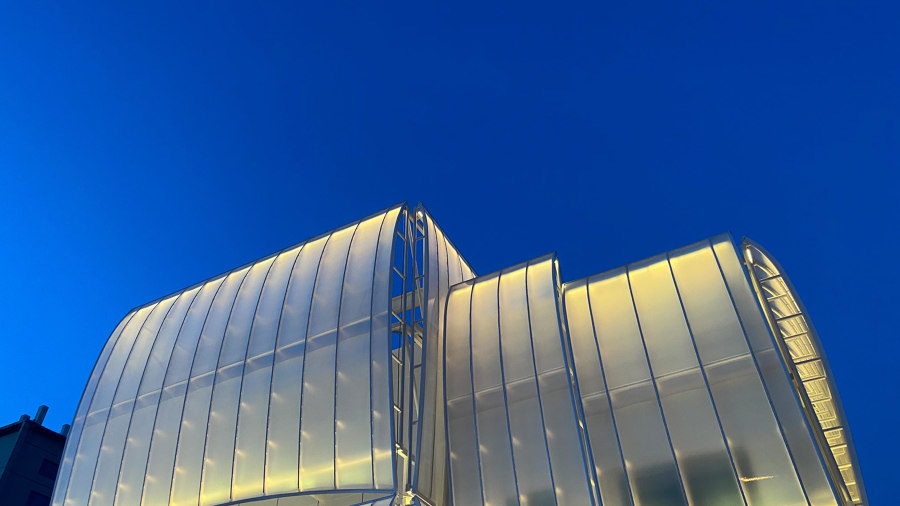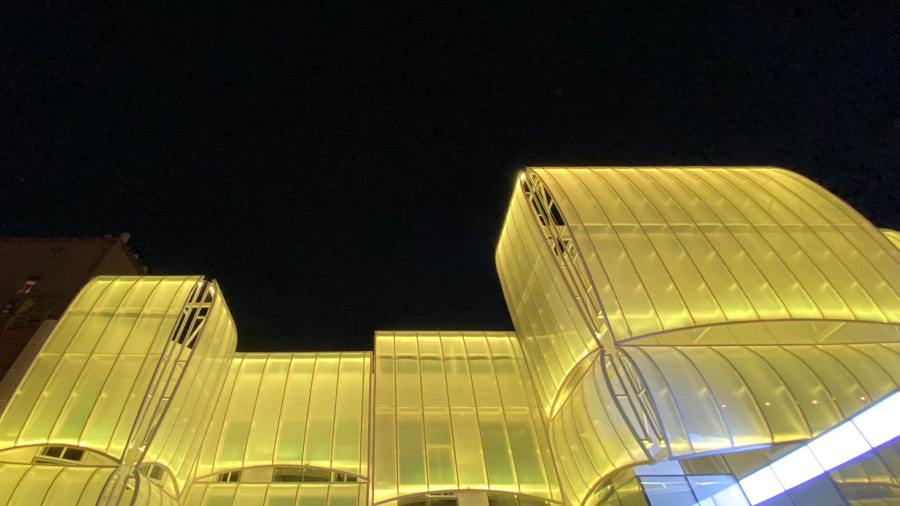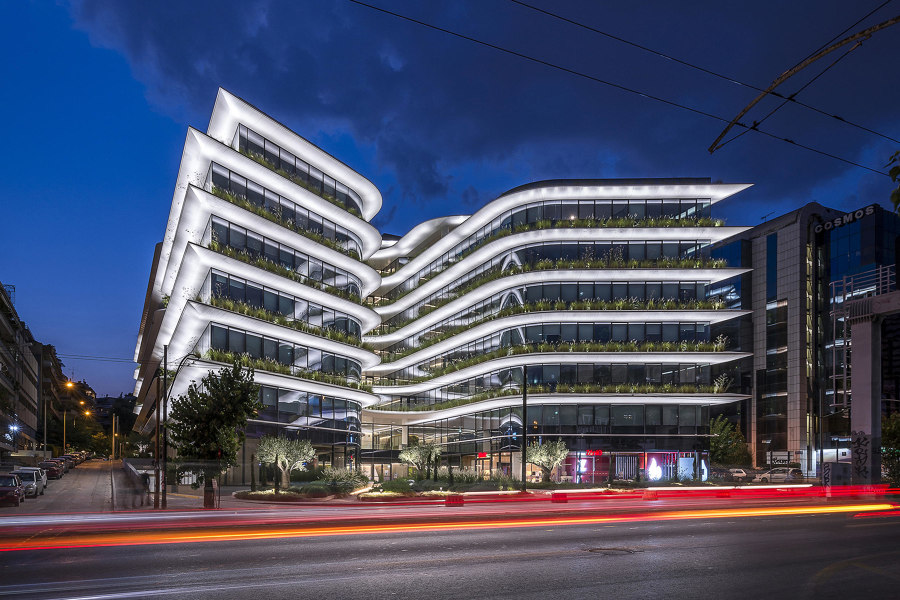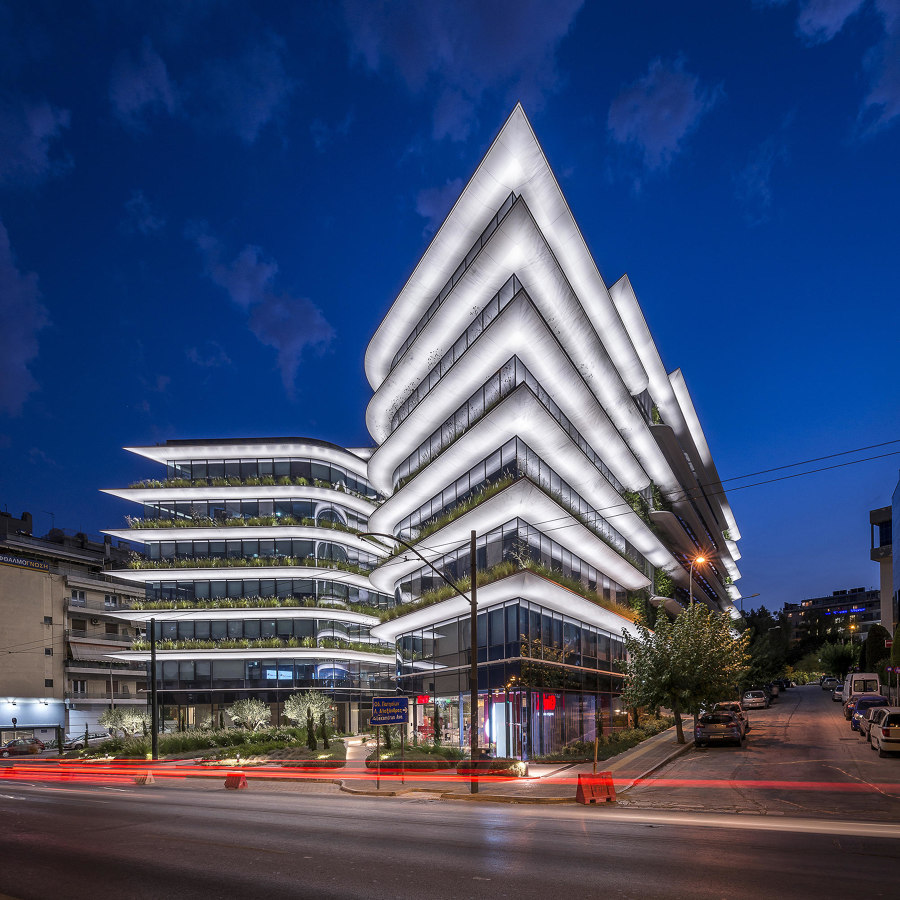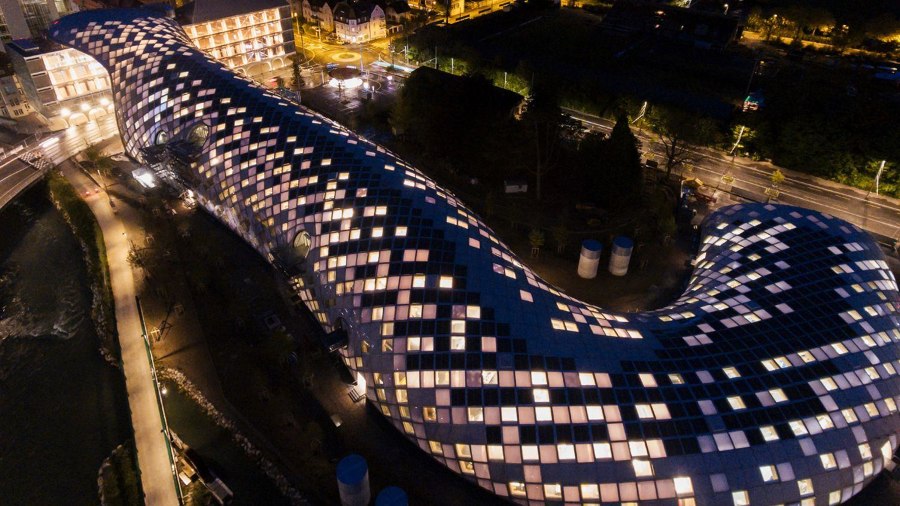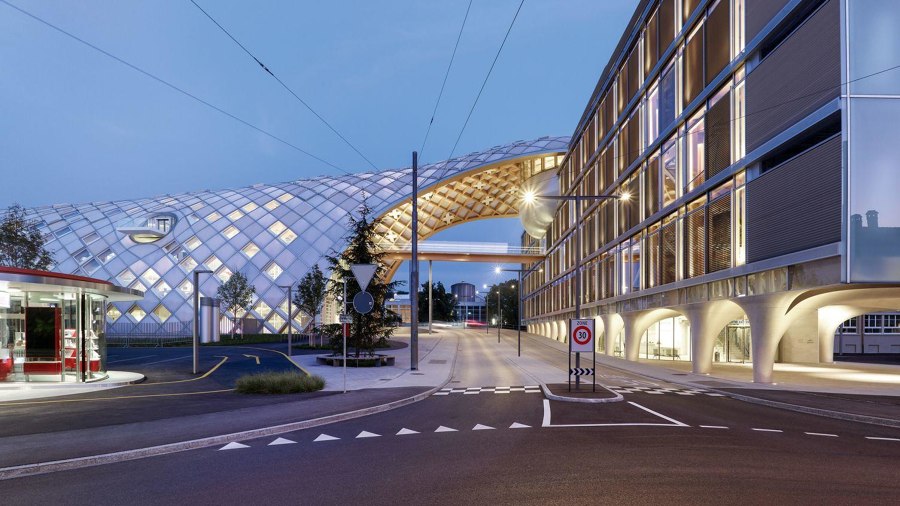How can architects best enhance our experience of architecture once the sun has gone down? One sure solution is close collaboration with specialised lighting planners...
With their ‘Orbit’ Urban Office Campus in Athens, Lianou Chalvatzis Architects and Vikelas Architects working with local lighting designer Athanassios Danilof, have created a new nocturnal landmark. Photo: Pygmalion Karatzas
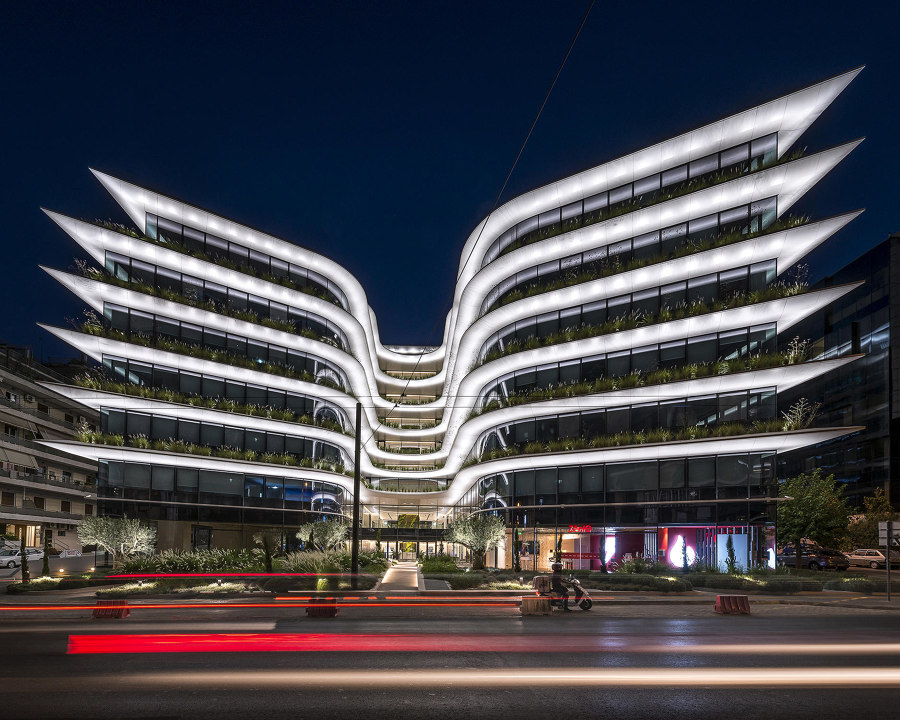
With their ‘Orbit’ Urban Office Campus in Athens, Lianou Chalvatzis Architects and Vikelas Architects working with local lighting designer Athanassios Danilof, have created a new nocturnal landmark. Photo: Pygmalion Karatzas
×Iconic both during the day as well as when darkness falls: in many cases, this is what architects are aspiring to when conceiving new projects. By utilising light as an architectural element, the unique, distinctive shapes of a structure's facade can be emphasised and architects can explore the potential of artificial light for creating more engaging visual experiences for city dwellers after the sun has gone down. Specific expertise is needed to achieve these desired effects, meaning collaboration between architectural offices and lighting design practices are increasingly common.
In the Zemel ‘nyi Business Center in Moscow, UNK Project and QPRO tried to minimise the effect of light pollution by orienting the luminous flux directly at the openwork metal frame of the facade. Photos: Marika Volkova
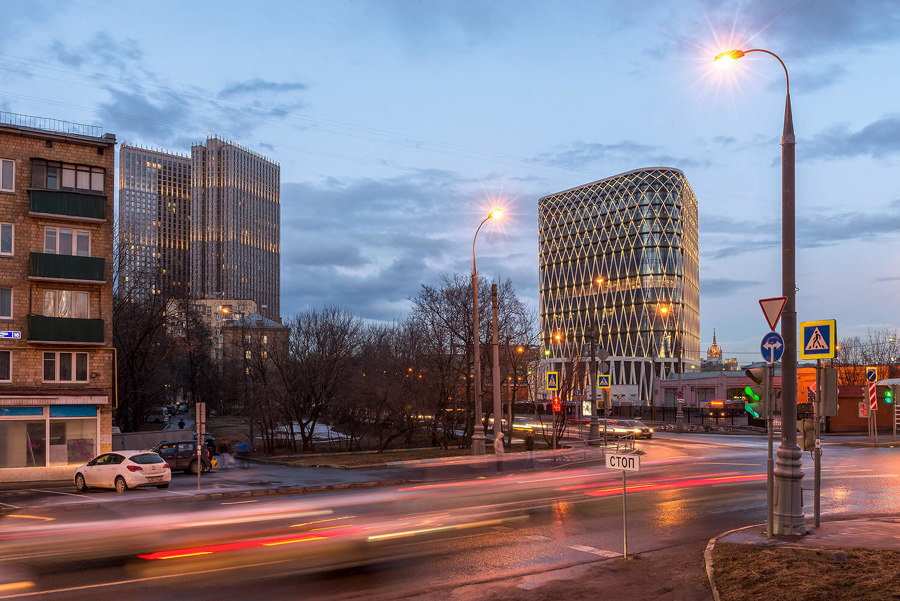
In the Zemel ‘nyi Business Center in Moscow, UNK Project and QPRO tried to minimise the effect of light pollution by orienting the luminous flux directly at the openwork metal frame of the facade. Photos: Marika Volkova
×In Moscow, UNK Project has designed Zemel ‘nyi Business Center in collaboration with QPRO, a company specialising in lighting design and automation. Here, the grid-like metal shell that wraps the entire building represented the most immediate logical architectural element to enhance with illumination. Doubly oriented LED projectors with narrow-beam-angle optics – placed in the intersections of the grid – outline each section of the metal mesh, marking the general design pattern and contrasting with the glazed facade background.
For the City Exhibition Hall in Tianjin, PURI Lighting placed rows of opposite linear floodlights behind the ETFE membrane and sprayed the curtain wall behind white to increase the uniform lighting effect of the building. Photos: Fang Hu
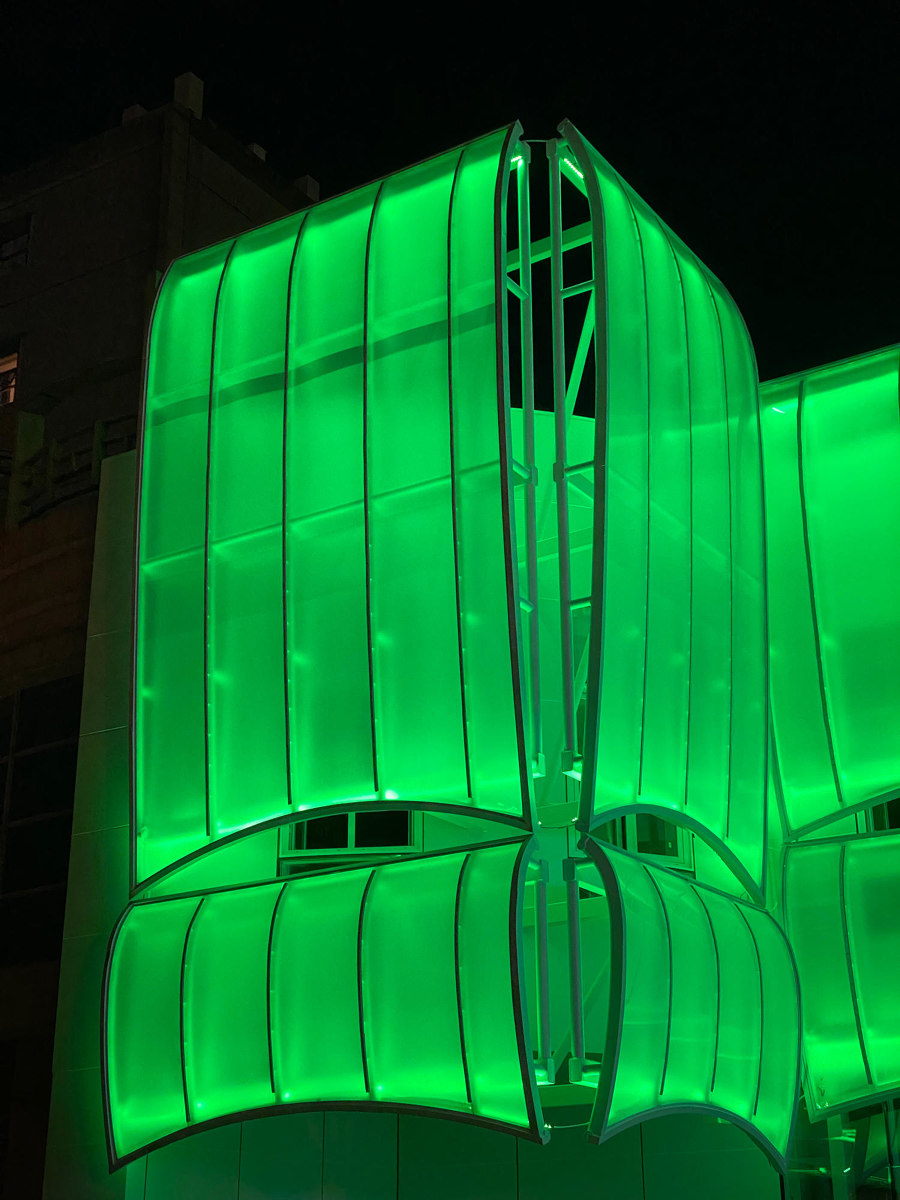
For the City Exhibition Hall in Tianjin, PURI Lighting placed rows of opposite linear floodlights behind the ETFE membrane and sprayed the curtain wall behind white to increase the uniform lighting effect of the building. Photos: Fang Hu
×Sometimes light can also become an iridescent element that continuously mutates, and in so doing create an engaging visual effect. Such is the case with the City Exhibition Hall in Tianjin, China, designed for Vanke Group with the consultancy of PURI Lighting. The ETFE film covering the facade appears as a neutral milky skin during the day, but when the lights permeate the inflatable membrane, its thinness is revealed, giving the building an entirely different atmosphere at night. The lamps, installed behind the film, can change colour according to event requirements or in response to certain conditions of the surrounding environment.
The ‘Orbit’ Urban Office Campus in Athens, developed with Danilof Light Studio, was a winner in the International LIT design 2020 for Exterior architectural illumination. Photos: Pygmalion Karatzas

The ‘Orbit’ Urban Office Campus in Athens, developed with Danilof Light Studio, was a winner in the International LIT design 2020 for Exterior architectural illumination. Photos: Pygmalion Karatzas
×When they were commissioned to design the ‘Orbit’ Urban Office Campus in Athens, Lianou Chalvatzis Architects and Vikelas Architects, in collaboration with the local lighting designer Athanassios Danilof, were aiming to create a new nocturnal city landmark. Here, the lighting scheme acts as a celebration of the architectural form. The sharp and undulating shapes of the building are emphasised by a white homogeneous light wrapping around the cantilevered slabs, by rendering them as thin self-luminous shimmering surfaces that stand out from the dark glazed facade behind.
With its roof structure consisting of 7700 unique pieces, the Swatch Headquarters designed by Shigeru Ban Architects in Biel is one of the largest hybrid mass timber projects in the world. Photos: Courtesy of Swatch Ltd and Reflexion
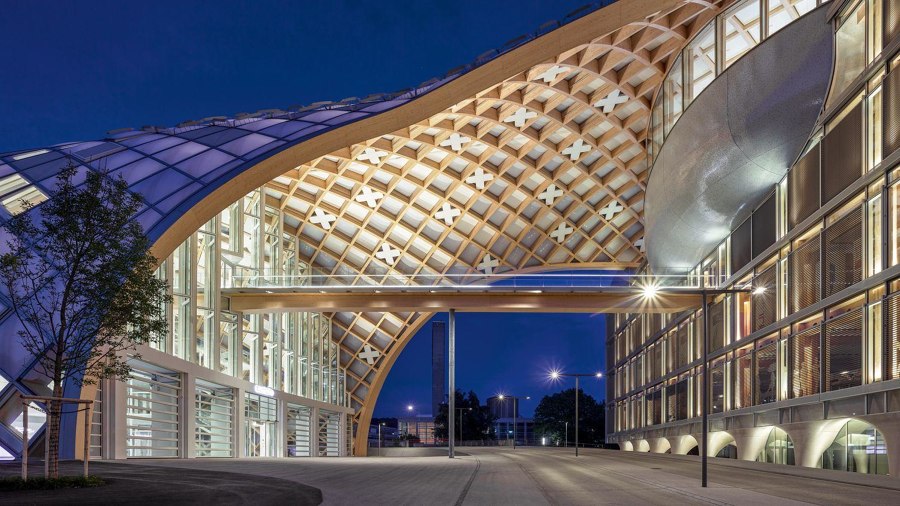
With its roof structure consisting of 7700 unique pieces, the Swatch Headquarters designed by Shigeru Ban Architects in Biel is one of the largest hybrid mass timber projects in the world. Photos: Courtesy of Swatch Ltd and Reflexion
×In the Swatch Headquarters designed by Shigeru Ban Architects in Biel, Switzerland, the lighting concept enhances the modularity of the facade by underlining its individual elements. The timber grid structure that forms the snake-shaped shell of the building consists of different types of honeycomb – opaque, translucent and transparent – which give the facade a quite uniform appearance during the day. At night, the interior lighting penetrates the translucent and transparent modules in a playful composition that makes the gradients and contrasts among the single cells readable.
© Architonic

